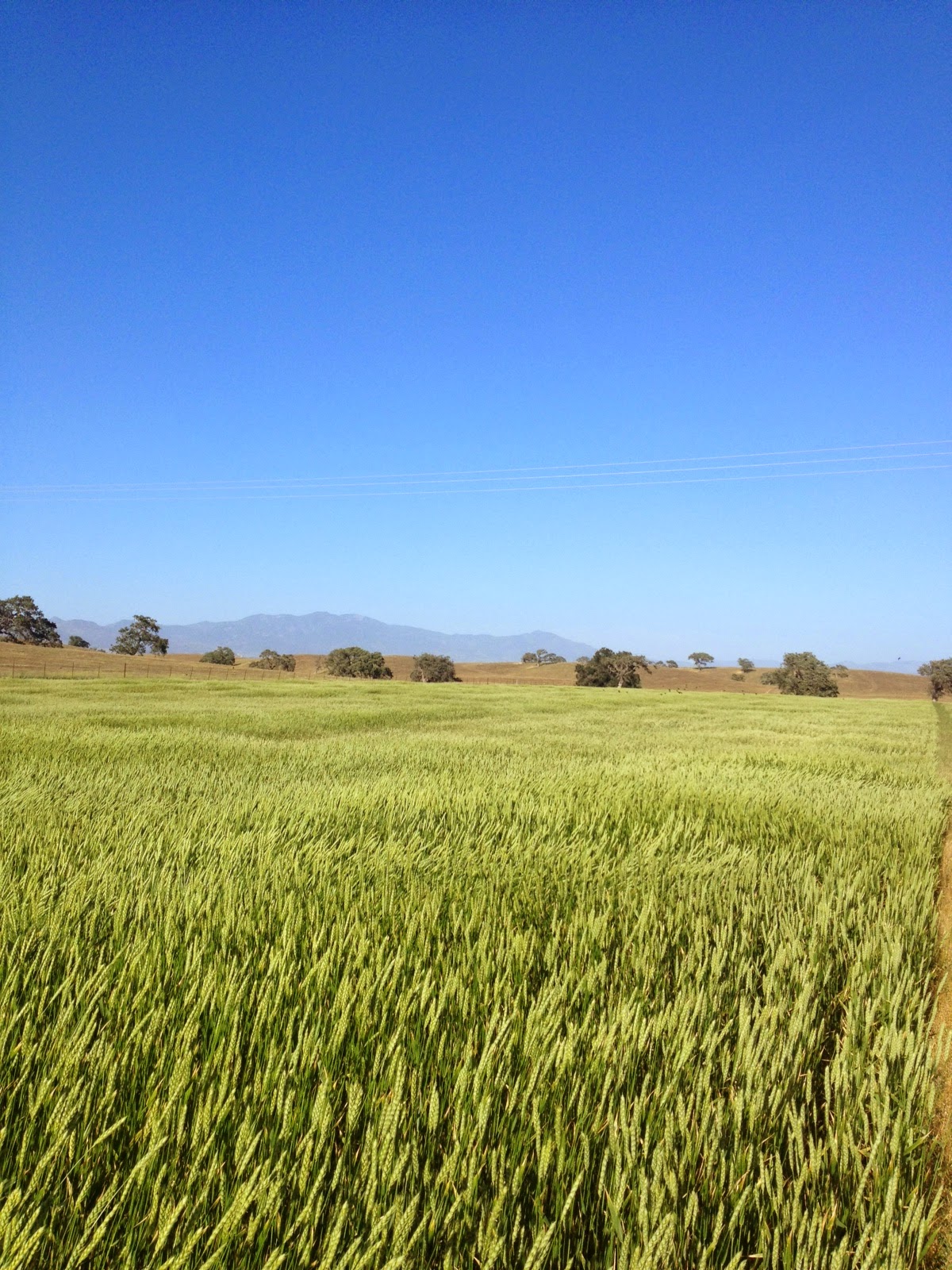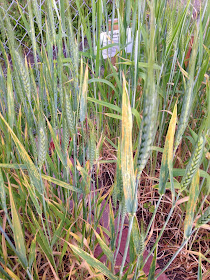In anticipation of a wheat harvest in our area, currently scheduled for July 26th, this is a brief description of the varieties we expect to see.
Red Fife is a hard red wheat that was North America's preferred bread wheat in the 19th century.
Usually it has only three short awns at the tip of the head.
Red Fife went out of production in the Great Depression, but seed preservationists kept the variety alive and it has made something of a comeback.
 |
| Week-old Red Fife sprouts |
A true land race, its qualities have contributed to many varieties since 1842 when Canadian farmer, David Fife, planted the first seeds to arrive in the western hemisphere on his farm near Peterborough.
 |
| Red Fife in boot stage |
 |
| Red Fife blossoms |
It was named “red” because of the rich color of the kernels. But growers find it is sometimes quite light colored, as it adapts to a mild weather terroir.
 |
| Red Fife grown this year in a Los Angeles front yard, showing a range of colors. |
 |
| Kernels, glumes (chaff), and rachilla (head stem) |
Red Fife is thought to have originated in Turkey and was grown in Ukraine's prolific farmlands, probably favored by Mennonite farmers. The story is that it found its way to Canada when a friend of David Fife saw some good-looking wheat being off-loaded in Glasgow, from a ship just arrived from Gdansk. Some versions of the tale insist he gathered up all he could in a winter "bonnet" he was wearing, mailed it off to his friend, and the rest is bread baking history.
It is wonderful to have Red Fife growing in our area. Over the years it has proven to have inherent diversity, a good adaptation to a range of soils, moisture levels, and temperature. It has a reputation for robust flavor and fine baking qualities.

In the next post, we'll talk a little about our other Lompoc-area wheat, GLENN, another fine grain for making bread.



























































